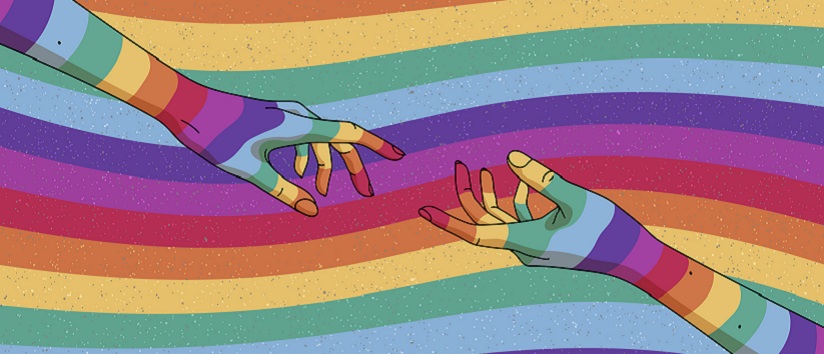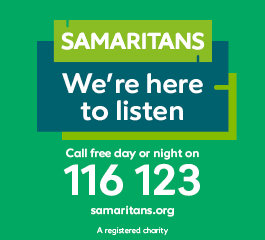Why we need to protect LGBT+ people during lockdown
29 January 2021
When I joined LGBT+ young people’s charity Just Like Us as chief executive in February 2020 my first big decision was sending everyone home. Just for two weeks, of course, to see how things played out. I was, presumably being overly cautious and would look forward to getting to know everyone a little better when we returned in early March. We’ll soon go for a nice lunch or something, I thought.
That was almost a year ago and – like teams across the country – we’ve been home ever since, working to understand the changing needs of the young people we support, many of whom have now been locked down for extended periods. Lunch, as with so many lunches, dinners and parties, is postponed.
- See also: 'Isolation among factors fuelling LGBTQ+ use of mental health crisis text service'
- See also: 'Government appoints first ever National Adviser to tackle LGBT health inequalities'
- See also: 'Health and social care discrimination faced by LGBT people'
Lockdown isn't only a collective experience it is individual
Tempting as it is to view the pandemic as something that impacts all of us equally, we’ve noticed significant differences in the way LGBT+ young people are coping. To understand why this might be, we need to consider lockdown not as universal or even regional, but personal. For me, lockdown means staying at home with my partner.
For the most part (you will be happy to read) this has not been that challenging. Members of my team have had different experiences. Two have had to move back in with family due to the challenges of finding suitable flatmates during this time, and one of my team is now juggling childcare on top of working full time and completing a qualification. Many more people across the UK have lost people close to them and are grieving, many have been affected by poor mental health, and many have faced unemployment resulting from Covid-19.
LGBT+ young people more broadly have their own sets of unique considerations. A study of LGBTQ people’s experience during the pandemic by University College London (UCL) and Sussex University found that 69 per cent of LGBTQ people surveyed had suffered depressive symptoms during lockdown and 10 per cent reported feeling unsafe in their own homes.
Laia Bécares, the study’s co-author and Deputy Director of the Centre for Innovation and Research in Wellbeing noted: “Many had to go back in the closet and live with people who either didn’t know their sexual orientation or gender identity, or were not supportive of it. The mental health implications are stark.”
We also know that young people, in particular, are struggling with mental health during the pandemic with 16 to 29-year-olds twice as likely as the over-70s to be experiencing loneliness. Being LGBT+ adds another layer of challenges.
Even before lockdown, the statistics around the mental health of LGBT+ young people were nothing for celebration. Metro Youth Chances report shows that LGBTQ young people are around twice as likely as straight people to attempt suicide, while research conducted by Pace in 2014 found that young trans people were approximately eight times as likely.
For many of the LGBT+ young people we support at Just Like Us, family is something that happens outside the house. Many LGBT+ people will speak warmly of their “chosen family”, a nod to the incompatibility that still comes with living in your family home as an LGBT+ young person and the necessity for many of us to seek support networks elsewhere.
Albert Kennedy Trust's research shows that 24 per cent of young people at risk of homelessness identify as LGBT, with 77 per cent citing familial rejection and abuse after coming out as the primary cause. With Black people up to four times as likely to die from Covid, there is an amplified and combined pressure on LGBT+ people of colour during this time. The evidence is clear that for many LGBT+ young people, home is not always where the heart is.
Being kept in your house can mean being kept out of your home
At Just Like Us, it became clear we needed to respond quickly to a new and challenging set of circumstances. While some LGBT+ young people might have a challenging time at school, others had an equally challenging time at home and may now be unable to even speak to their friends on the phone for fear of being overheard and outed to an unaware or unaccepting audience.
In June, we partnered with Facebook to bring School Diversity Week – our annual celebration of LGBT+ inclusion in education – online. We anticipated lower participation than usual, given the circumstances, but were surprised when we engaged schools representing 1.97 million young people – up from 1.4m the year before.
We’ve also just finished training our latest cohort of ambassadors, LGBT+ young people who share their story to increase the visibility and acceptance of LGBT people everywhere. Again, we expected issues with engagement when we delivered training, and again, our expectations were surpassed with our programme training a record 158 participants.
We were certain that our final programme – Pride Groups, which trains teachers and schools to implement LGBT and allies groups within their schools – would struggle during lockdown. Yet again our expectations were surpassed, and we have seen an increase of schools joining the programme of over 1000 per cent.
This shows clearly that while lockdown has made running school-based programmes to support LGBT+ young people difficult, young people and teachers are no less willing to engage with this work when given the chance.
This puts the responsibility firmly back on us as a society to find creative ways of reaching the people in our communities who are most affected by lockdown and bringing them out of isolation and sends a message to those of us for whom this is merely an inconvenience that for others, being kept in your house means being separated from your home.


Comments
Write a Comment
Comment Submitted